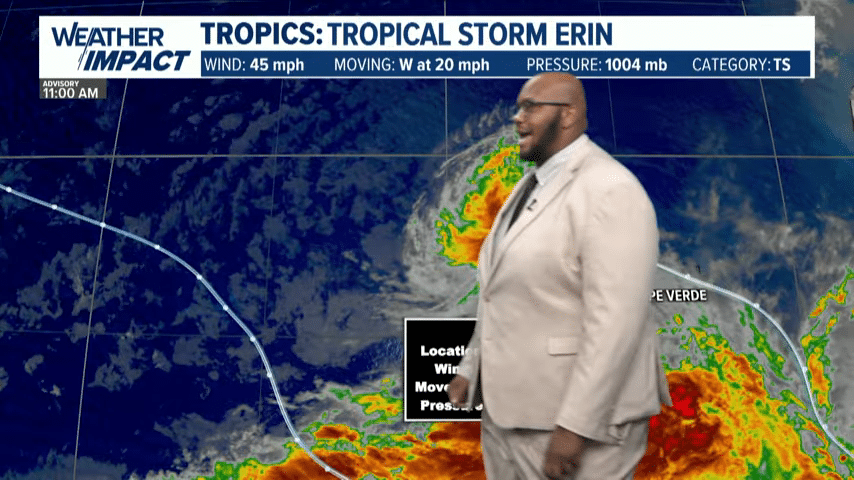Tropical Storm Erin has quickly made its mark on the 2025 hurricane season. Starting as a modest tropical depression, it’s now gaining strength, and meteorologists are closely watching its progress. The key tool they’re using to track Erin’s path? The spaghetti models. These lines on a map, seemingly chaotic at first glance, give crucial insights into where the storm could head next.
These spaghetti models show potential paths Erin might take, based on different computer-generated forecasts. For people along the East Coast, in the Caribbean, and in parts of the Atlantic, these models are critical for early warnings. But, like all hurricane predictions, they come with a fair amount of uncertainty. Right now, Erin’s track looks like it could go in several different directions.
Erin’s Path: What the Spaghetti Models Are Telling Us
As Erin strengthens, the spaghetti models start to provide more clarity, though the uncertainty remains. Early predictions suggest that Erin could continue westward over the Atlantic, intensifying as it goes. By mid-week, it might become a Category 1 hurricane, a key milestone in forecasting its potential impact.
Some models show Erin veering off into the Atlantic, sparing the U.S. East Coast. However, others hint at a possible landfall scenario, pushing the storm closer to the coast. The exact path is still uncertain, and for now, we can only follow the spaghetti lines to see how they change over the coming days.
Why Do Spaghetti Models Matter?
Spaghetti models are more than just lines on a map; they provide critical guidance for both meteorologists and residents. These models rely on real-time data from satellites, weather stations, and ocean buoys. This helps to simulate the storm’s future path.
But what makes these models tricky is the way they can diverge. Erin is still in its early stages, and several atmospheric factors, like wind patterns and ocean temperatures, can change its course. So, while one model may predict a safe turn into the ocean, another could bring the storm dangerously close to the U.S.
Preparing for the Worst-Case Scenario

Even with the uncertainty of Erin’s path, these models offer a chance for preparation. If the models converge on a landfall scenario, residents in affected regions will have time to prepare for the storm. If the models diverge, the uncertainty might prompt authorities to issue early warnings or take other precautionary steps.
Regardless of the outcome, it’s important for people in potential impact zones to stay informed. Whether it’s rough surf, dangerous rip currents, or a direct hit, early action can make all the difference.
The Science Behind Spaghetti Models
Spaghetti models are powered by complex simulations that take into account satellite data, atmospheric pressure, ocean conditions, and historical patterns. They essentially create a range of possible outcomes based on different scenarios. Each model feeds off the same data but interprets it in its own way. This explains why there can be significant differences in the storm’s predicted path.
While no model is perfect, the variety in these predictions is crucial. It shows the range of possibilities and helps meteorologists and emergency planners get ready for multiple outcomes.
Looking Ahead: The Future of Spaghetti Models
The good news? The technology behind spaghetti models is only improving. With the integration of AI and machine learning, these models will become even more accurate. AI can process vast amounts of data, refining predictions faster than ever before.
As global climate patterns change, these models will also adapt. The future of storm prediction looks brighter, and with it, the ability to track storms like Erin with greater precision.
| Storm Name | Current Status | Predicted Path | Expected Impact | Link for Tracking |
|---|---|---|---|---|
| Tropical Storm Erin | Gradually intensifying | Westward movement, potential shift northward | Possible hurricane, East Coast risk | Track Erin – Newsweek |
In the end, while we can’t predict exactly where Erin will go, the spaghetti models are an essential tool in giving us a glimpse of what’s to come. As technology advances and forecasting becomes even more accurate, these models will continue to be an invaluable resource in hurricane tracking and preparedness.
